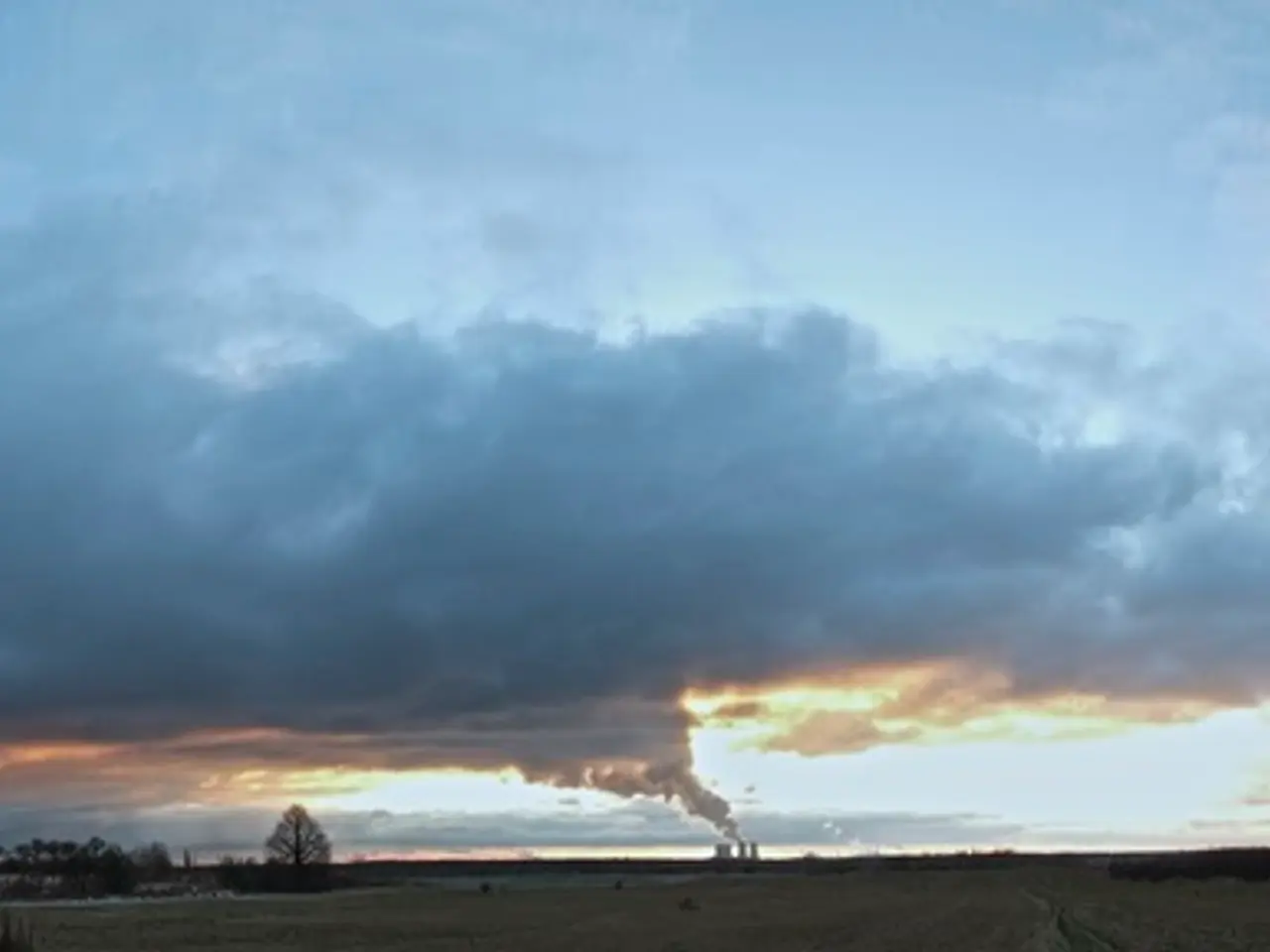War contributions to climate crisis: unveiling how conflicts drive carbon emissions
The old Western world, long associated with global dominance, finds itself at a crossroads where war, climate debates, and the military-industrial complex intersect in a complex dance of environmental degradation and conflict.
The U.S. military, one of the world's largest carbon emitters, is set to increase its emissions significantly with a budget hike to $1 trillion by 2026. This escalation could lead to annual emissions of around 178 megatons of CO2 equivalent, akin to the emissions of a mid-sized country and causing estimated $47 billion in global climate damages[1]. Similarly, NATO states collectively could reach 2.3 billion metric tons by 2030 if military spending continues to grow[2].
This relationship between military investments and climate change forms a feedback loop, where increasing emissions and warming exacerbate existing social and geopolitical conflicts, prompting further militarization and spending[2]. This cyclical pattern diverts resources from renewable energy and climate adaptation, especially in vulnerable countries.
Military actions, including operations, arms transfers, and wars, contribute additional emissions and environmental destruction that worsen local conditions. For example, U.S. arms transfers to Israel indirectly contribute to this footprint[1]. Armed conflicts in Gaza, Israel, and Iran are further intensified by climate-induced stresses like water scarcity and extreme weather, though direct studies on these conflicts’ climate-military intersection remain limited in these sources.
The military sector faces operational risks and increased costs due to climate impacts like floods and storms that damage bases and infrastructure[3]. This context underscores the intertwined nature of climate and military issues.
However, the environmental impact of the war industry is often overlooked or intentionally ignored by Western leaders, with the public kept in the dark about the extent of this damage. The destruction of cities by militaries is not addressed in ESG reporting, and the systematic exclusion of military emissions from ESG reporting is a deliberate complicity orchestrated by capital market actors linked to the war industry[4].
The ESG industry's focus on minor issues is a calculated deception regarding the war industry's environmental impact, while the proliferation of digital media has numbed us to the suffering caused by war, making violence background noise[6]. The global war industry profits from the devastation of innocents and the environment, with thoughts and prayers trending on social media, but distractions following quickly[7].
In the face of this complex interplay, it is crucial to address the military-industrial complex's role in climate change, particularly in regions like Gaza, Israel, and Iran, where environmental degradation worsens political tensions and humanitarian conditions, feeding back into the cycle of militarization and climate harm[1][2][5].
References:
[1] Brown, L. D. (2019). The Pentagon's massive carbon footprint. The Guardian. Retrieved from https://www.theguardian.com/us-news/2019/dec/05/pentagon-carbon-footprint-climate-change
[2] Watts, J. (2019). Pentagon's greenhouse gas emissions to increase under Trump's defence budget. The Guardian. Retrieved from https://www.theguardian.com/us-news/2019/dec/18/pentagons-greenhouse-gas-emissions-to-increase-under-trumps-defence-budget
[3] U.S. Department of Defense. (2020). Department of Defense Climate Change Research Program. Retrieved from https://www.defense.gov/dodccrp/
[4] Kliman, M. (2020). The ESG industry's deliberate complicity in the war industry's environmental destruction. Truthout. Retrieved from https://truthout.org/articles/the-esg-industrys-deliberate-complicity-in-the-war-industrys-environmental-destruction/
[5] Brown, L. D. (2019). The military-industrial complex's role in climate change. The Guardian. Retrieved from https://www.theguardian.com/commentisfree/2019/dec/05/military-industrial-complex-climate-change-war-environment
[6] Kliman, M. (2020). The proliferation of digital media and the numbing of our empathy for war victims. Truthout. Retrieved from https://truthout.org/articles/the-proliferation-of-digital-media-and-the-numbing-of-our-empathy-for-war-victims/
[7] Kliman, M. (2020). The global war industry's profits from the devastation of innocents and the environment. Truthout. Retrieved from https://truthout.org/articles/the-global-war-industrys-profits-from-the-devastation-of-innocents-and-the-environment/
- The $1 trillion military budget hike in the US by 2026 could result in an estimated 178 megatons of CO2 emissions annually, comparable to the emissions of a mid-sized country and causing substantial global climate damages.
- The NATO states are projected to collectively emit 2.3 billion metric tons of CO2 by 2030 due to growing military spending, further exacerbating the ongoing climate crisis.
- The relationship between military investments and climate change forms a feedback loop; increased emissions and warming lead to more social, geopolitical conflicts, causing further militarization and spending.
- Militarized conflicts, such as those in Gaza, Israel, and Iran, are intensified by climate-induced stresses like water scarcity and extreme weather, yet direct studies on these conflicts' climate and military intersection remain limited.
- Despite the detrimental environmental impact of the military sector, the destruction caused by militaries goes unaddressed in ESG reporting, with the systematic exclusion of military emissions a calculated deception by capital market actors in the war industry.








